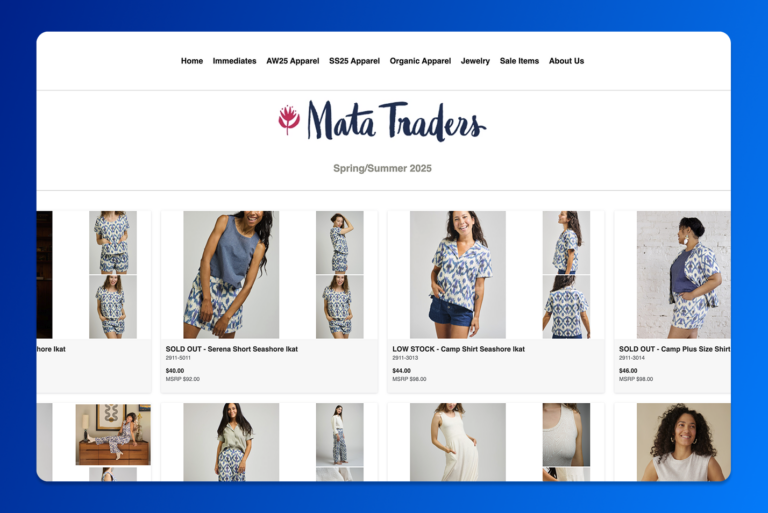Micro-influencers are people who have a small but loyal group of followers and they are changing how marketing is done these days online. In essence, they’re real people with loyal followers who trust their advice on what to buy.
Now, let’s look at how the fashion shopping world is moving away from old-style ads to this new way of marketing with popular fashion blog influencers or social media fashion influencers. It’s not just about big ads on billboards anymore; it’s about real people sharing their love for fashion. So, why are fashion influencers important?
Well, leveraging the power of leading fashion influencers is not just a cool thing to do—it’s becoming a smart business decision in the fashion industry. Getting to know how micro-influencers can help in marketing for fashion stores is like finding a shortcut to success. It’s all about making real connections with customers and selling more clothes!
A Brief Overview Of Marketing Methods For Retailers
In the past, fashion retail stores mostly used traditional marketing methods. They would place ads in newspapers, magazines, or on billboards to get people’s attention. They also used TV and radio commercials to reach a wider audience.
Then, a new kind of marketing started to grow – influencer marketing. This is when brands started teaming up with popular people on social media platforms, Instagram in particular.
For instance, Instagram fashion influencers would share posts about the brand’s products and recommend them to their followers, and this way, brands could reach many people in a more personal way.
How Fashion Influencers Boost Fashion Retail Marketing
In the early days, fashion brands often collaborated with well-known faces with vast followings, dubbed as macro fashion influencers.
However, over time, the spotlight in the fashion space began to shift toward micro fashion influencers, those with a more modest but more engaged audience. Despite having fewer followers, micro-influencers exude a sense of authenticity and relatability that resonates well with fashion enthusiasts.
Their genuine interactions and close-knit community draw more retailers towards them. And of course, this shift marked a new chapter in fashion retail marketing, underscoring the value of authentic endorsement and intimate engagement in promoting fashion brands and products.
The Current Scene of Micro-Influencer Marketing in Fashion Retail
Micro-influencers are regular people who have a small number of followers, usually no bigger than ten-digit numbers. They share their personal style, both elegant and street style, and give fashion advice online on various social media platforms. This, of course, is a great fit for fashion brands that want a more genuine approach with their clients.
Some notable fashion brands like Revolve, ASOS, and Fashion Nova have worked with micro-influencers and seen good results. They team up with these names for product launches or special promotions, helping them – the brands – get more attention and sell more.
When a top fashion influencer talks about a fashion item, it feels real and honest, not like a sales pitch or an ad.
The Benefits of Micro-Influencer Marketing
The rise of micro-influencer marketing has paved the way for a more intimate and trust-driven promotion of clothing lines and lifestyle brands. Engaging with micro-influencers, often revered as top style influencers due to their unique and personable social media presence, has become a cost-effective strategy for brands aiming to captivate the latest trends’ aficionados.
Unlike the impact of the biggest fashion influencer, micro-influencers, with their modest yet engaged following, offer a more organic reach. They frequently interact with their followers akin to how friends do, thus fostering a tight-knit community around their fashion and lifestyle narratives.
Their endorsement of a brand or product often resonates as genuine and trustworthy, much akin to a recommendation from a close acquaintance rather than a faceless advertisement.
Popular fashion bloggers and Instagram personas, although they might have smaller followings compared to mainstream fashion icons, often harbor a more interactive and loyal audience. This camaraderie they share with their audience makes their influencer marketing approach feel less like a sales pitch and more like a friendly suggestion.
Moreover, their adept understanding of social media algorithms combined with a knack for showcasing fashion in a relatable manner, amplifies the brand’s message effectively. These micro-influencers often have a good grasp of what resonates with their audience, making them invaluable for brands aiming to solidify their social media presence.
Ventures, especially those emerging from fashion institutes with a fresh perspective, find a lucrative avenue in collaborating with micro-influencers. This not only provides them with a platform to showcase their creativity but also aligns well with modern consumers who appreciate a more genuine and less commercialized promotion.
Being Open and Honest: Working Clearly with Micro Fashion Influencers
When fashion brands and micro-influencers join hands, maintaining an open and honest relationship is fundamental. This entails a clear communication channel where expectations, objectives, and values are shared openly. It’s about forming a partnership where both parties are clear about their expectations, deliverables, and the message that will be conveyed to the audience.
This ensures that the marketing message aligns with the brand’s ethos and upholds followers’ trust in any of the top micro-influencers they follow.
It’s imperative that the authenticity that micro-influencers are known for is maintained through transparent partnerships. An ethical approach to these partnerships reflects an image of integrity for both the fashion brand and the top fashion blogger or influencer, creating a win-win scenario in the complex world of digital marketing.
Moreover, adhering to legal and ethical guidelines, such as disclosure regulations, further solidifies the trustworthiness of these collaborations, making them more fruitful and respected in the long run.
Building a Group: How Micro-Influencers Create Communities
Micro-influencers are often seen as the bridge that connects fashion brands with niche communities. With a knack for organic engagement, they foster a sense of community among their followers. Through their relatable content, consistent interaction, and a genuine understanding of their audience’s preferences, micro-influencers create a virtual space where conversations flourish and experiences are shared.
It’s this community-centric approach of fashion Instagram influencers that translates into brand loyalty. When a micro-influencer shares their genuine love for a fashion brand, it resonates with their followers, creating a ripple effect of brand appreciation.
Over time, this community engagement cultivates a loyal customer base, making micro-influencers invaluable assets in the fashion world. The unique blend of style icon authenticity and relatability that micro-influencers bring to the table helps in forming a bond between the fashion brand and the community, which in turn, drives a sustainable customer-brand relationship.

Mixing Tech with Fashion Influencers: New Tech in Micro-Influencer Marketing
As technology continues to evolve, the realm of influencer marketing campaigns is not far behind in catching up with the latest advancements. Micro-influencers are now dabbling with emerging technologies like augmented reality (AR) and virtual reality (VR) to create immersive brand experiences.
By integrating these technologies, micro-influencers can showcase fashion products in a more engaging and interactive manner. For instance, using AR filters, followers can virtually try on accessories or apparel, making the shopping experience more exciting and personalized.
Similarly, VR can transport followers into virtual stores, providing a novel way to explore fashion collections. This integration of micro-influencers and cutting-edge technology not only elevates the marketing game for fashion retail brands but also sets the stage for a futuristic shopping experience.
The collaborative effort between micro-influencers, fashion blogs, and tech innovators presents an avenue for fashion retailers to present their products in a groundbreaking and engaging manner, making the online shopping experience more interactive, enjoyable, and memorable.
Future Trends Involving Fashion Influencers and the Fashion Industry
The evolving digital landscape holds significant potential for micro-influencer marketing for fashion lines.
Micro-influencers can help fashion brands stay current with fashion trends and connect with audiences on a personal level. They can be integrated with other digital marketing strategies to build a stronger online presence for fashion retail brands.
Moving forward, micro-influencers might play an even larger role in fashion retail marketing, shaping how fashion brands interact with customers online and influencing the utilization of other digital marketing tactics.
Challenges and Considerations When Working with Micro Fashion Influencers
Finding the right micro-influencers who share the same values as a fashion brand can be a challenge. It’s vital for the partnership to feel natural and authentic. Measuring the success of fashion designer and micro-influencer campaigns is another hurdle, as it’s not always clear-cut to track the sales or engagement generated from a campaign.
Moreover, there are regulatory and ethical guidelines in influencer marketing campaigns that need adherence.
Both fashion brands and micro-influencers need to navigate these guidelines to ensure fair and honest business practices.
Conclusion
The digital landscape has reimagined the way fashion retail brands connect with their audiences. Micro-influencers, with their modest but engaged following, have emerged as a pivotal part of this change, ushering in a more authentic and relatable form of marketing.
As opposed to traditional advertising avenues, these individuals offer a human touch, sharing their genuine love for fashion, which resonates well with their followers. Their unique approach not only saves money for fashion brands but also fosters a community of loyal customers.
The transition from traditional marketing strategies to influencer marketing, particularly with micro-influencers, signifies a broader shift towards authenticity and relatability in the fashion industry. It’s not just about showcasing products, but creating meaningful connections and offering an interactive shopping experience.
Moreover, the integration of emerging technologies like AR and VR by micro-influencers is a testament to the evolving nature of marketing, where the blend of human interaction and technological innovation holds the promise of a more engaging and futuristic shopping experience.







